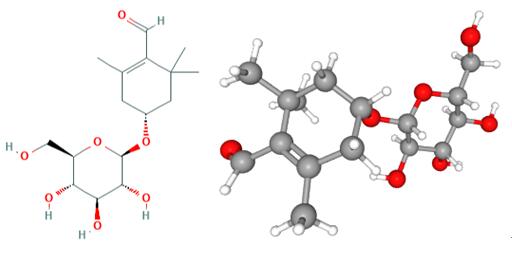DEAE-DEXTRAN-Application
DEAE-Dextran (Di-ethyl-amino-ethyl Dextran) is a polycationic derivative of Dextran. It is a white, hygroscopic powder, freely soluble in water and salt solutions which, under the right conditions, can be sterilized by autoclaving or by sterile filtration.
DEAE-Dextran maintains its quality and efficacy for more than 3 years when stored at room temperature in airtight packaging. The product is supplied as the hydrochloride.
DEAE-Dextran offers a wide range of chemical and biological properties. The following properties are well documented:
- Adjuvant in vaccines
- Agent for transfection
- Stabilizer of proteins
- Agent for reduction of cholesterol count
- Enhancer of viral infectivity

Fig 1. Chemical structure formula and three-dimensional structure of DEAE-DEXTRAN
Transfection of cultured mammalian cells using diethylaminoethyl (DEAE)-dextran/DNA can be an attractive alternative to other transfection methods in many circumstances. The major advantages of the technique are its relative simplicity and speed, limited expense, and remarkably reproducible interexperimental and intraexperimental transfection efficiency. Disadvantages include inhibition of cell growth and induction of heterogeneous morphological changes in cells.
Furthermore, the concentration of serum in the culture medium must be transiently reduced during the transfection. In general, DEAE-dextran DNA transfection is ideal for transient transfections with promoter/reporter plasmids in analyses of promoter and enhancer functions, and is suitable for overexpression of recombinant protein in transient transfections or for generation of stable cell lines using vectors designed to exist in the cell as episomes. This unit presents a general description of DEAE-dextran transfection, as well as two more specific protocols for typical experimental applications. The basic protocol is suitable for transfection of anchorage-dependent (attached) cells. For cells that grow in suspension, electroporation or lipofection is usually preferred, although DEAE-dextran-mediated transfection can be used[1,2].
Diethylaminoethyl (DEAE)-dextran is a polycationic derivative of the carbohydrate polymer dextran, and it is one of the first chemical reagents used to transfer nucleic acids into cultured mammalian cells (Vaheri and Pagano, 1965). The cationic DEAE‑dextran molecule tightly associates with the negatively charged backbone of the nucleic acid, and the net positive charge of the resulting nucleic acid-DEAE‑dextran complex allows it to adhere to the cell membrane and enter into the cytoplasm via endocytosis or osmotic shock induced by DMSO or glycerol.
The advantages of DEAE-dextran method are its relative simplicity, reproducibility, and low cost, while its disadvantages include cytotoxicity and low transfection efficiency for a range of cell types (typically less than 10% in primary cells), as well as the requirement for reduced serum media during the transfection procedure. In addition, this method is limited to transient transfections, and is not suitable for generating stable cell lines.
DEAE-Dextran is used in the development of sustained release protein delivery and nucleic acid transfection systems. The use of DEAE-Dextran as an efficient adjuvant in vaccine production is well established. For instance, DEAE-Dextran has been used for immunization of guinea pigs and swine with inactivated foot-and-mouth disease and rhesus monkeys with inactivated Venezulean equine encephalomyelitis virus, IVEE. The mechanism of action of DEAE-Dextran is not clear. The effect on the humoral response of rhesus monkeys to IVEE vaccine results in a typical IgM-IgG response. It has been speculated that DEAE-Dextran may cause a stimulation of the helper T-cell function in antibody synthesis[3,4].
References
[1] Curr Protoc Cell Biol. 2003 Aug;Chapter 20:Unit 20.4.
[2] Lopata Margaret A, Cleveland Don W, Sollner-Webb Barbara. High level transient expression of a chloramphenicol acetyl transferase gene by DEAE-dextran mediated DNA transfection coupled with a dimethyl sulfoxide or glycerol shock treatment[J]. Nucleic Acids Research, 1984(14):14.
[3] Gauss George H, Lieber Michael R. DEAE-dextran enhances electroporation of mammalian cells[J]. Nucleic Acids Research, 1992(24):24.
[4] Karl D Mack, Ran Wei, Ahmed Elbagarri, A novel method for DEAE-dextran mediated transfection of adherent primary cultured human macrophages[J]. Journal of Immunological Methods, 1998, 211(1-2):79-86.
You may like
Related articles And Qustion
Lastest Price from DEAE-DEXTRAN manufacturers

US $1.00-2.00/KG2019-08-08
- CAS:
- 9015-73-0
- Min. Order:
- 1KG
- Purity:
- 98%
- Supply Ability:
- 1kg,10kg,100kg


